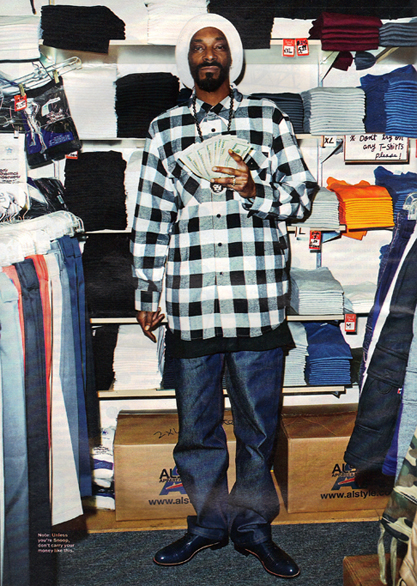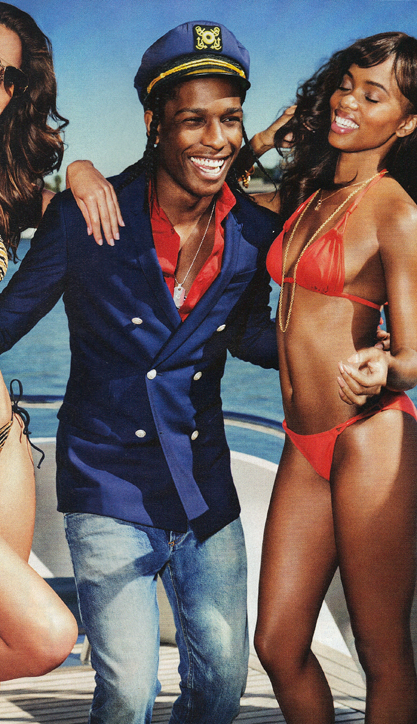 |
| While masculinity within the two magazines has been defined as being heteronormative above all things, how does race play into the visualization of masculinity? When regarding absences in a discourse analysis, Rose claims "invisibility can have just as powerful effects as visibility" (Rose 219). By looking at the covers alone, ethnic diversity does not appear to be too high on the priority list of the editors.
An article by Derek Griffith, Katie Gunter, and Daphne Watkins regarding masculinity and the health of men of color stresses the point that differences in masculinity between white men and men of color are cultural and political, but not biological. The invisibility or visibility of ethnic diversity in Maxim and GQ, then, does not reflect a biological truth regarding the ideal masculine race. Instead, it shows a naturalized ideology, or myth, surrounding race and masculinity. In Maxim, women of several ethnicities are depicted throughout the magazine, although white women seem to be the predominant choice. In a day and age where ethnic and cultural homogeneity seem to become less and less feasible, diversity of the depicted women appear to be more than justified. Because of this, men are not constrained to being attracted to white women alone anymore. However, the men depicted by Maxim appear to be less diverse than the women. Apart from the token black man in the Ralph Lauren cologne advertisement, the only ethnic males in the magazine are celebrities such as Snoop Dogg. While showing signs of progression with the diversity of females, Maxim continues to cater to predominantly white males. Because of the lack of ethnic diversity, the magazine visualizes masculinity as being either white or a celebrity. |
 |
| GQ does a slightly better job of visualizing ethnic diversity. Along with ethnic women, ethnically diverse models, celebrities, athletes, and chefs are all present within the confines of GQ. Although it still appears to favor white people in advertisements and images, it does not look as apparent as with Maxim. With GQ, therefore, masculinity is not necessarily constrained by ethnicity, although being white would definitely not hurt. |